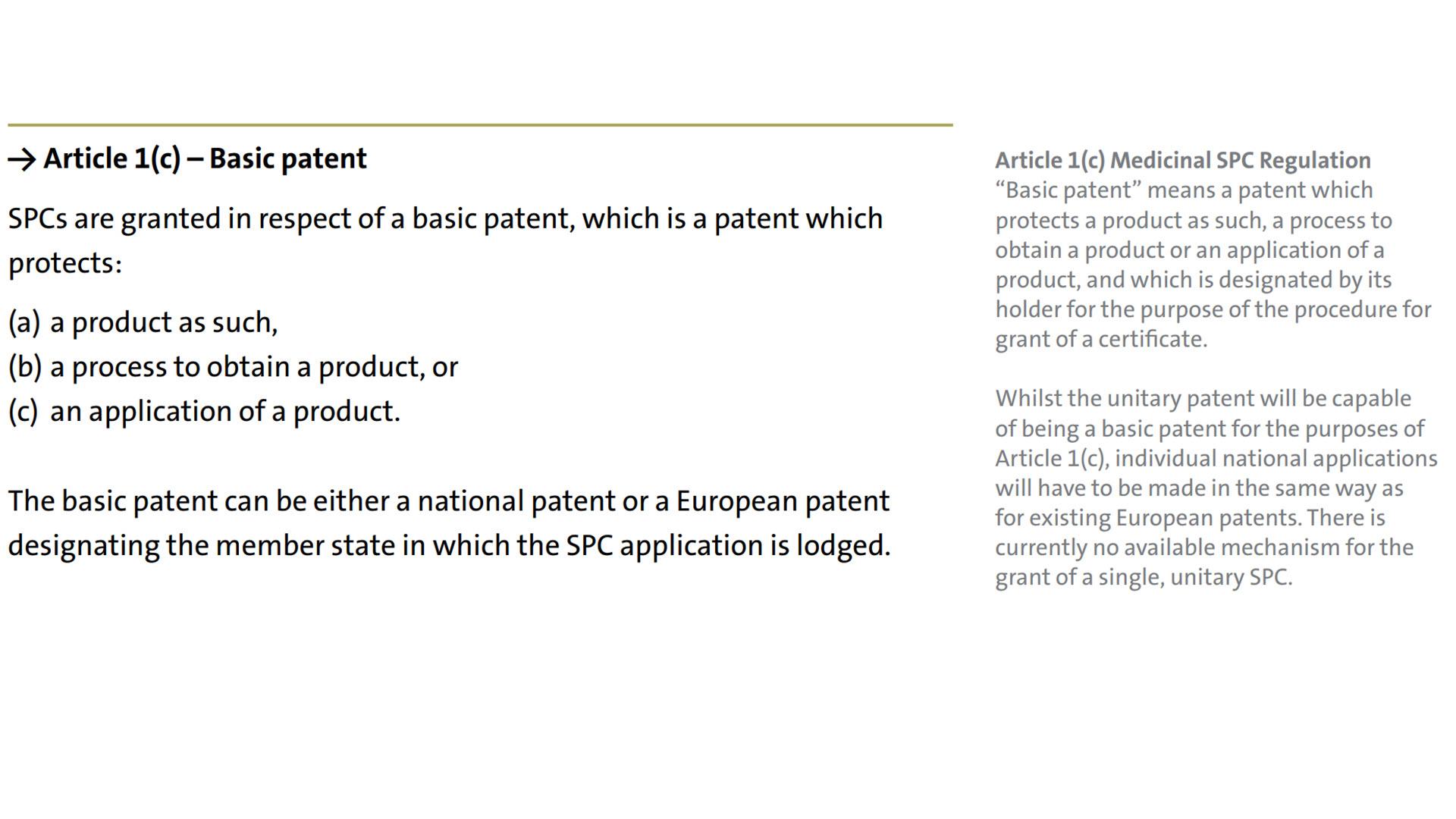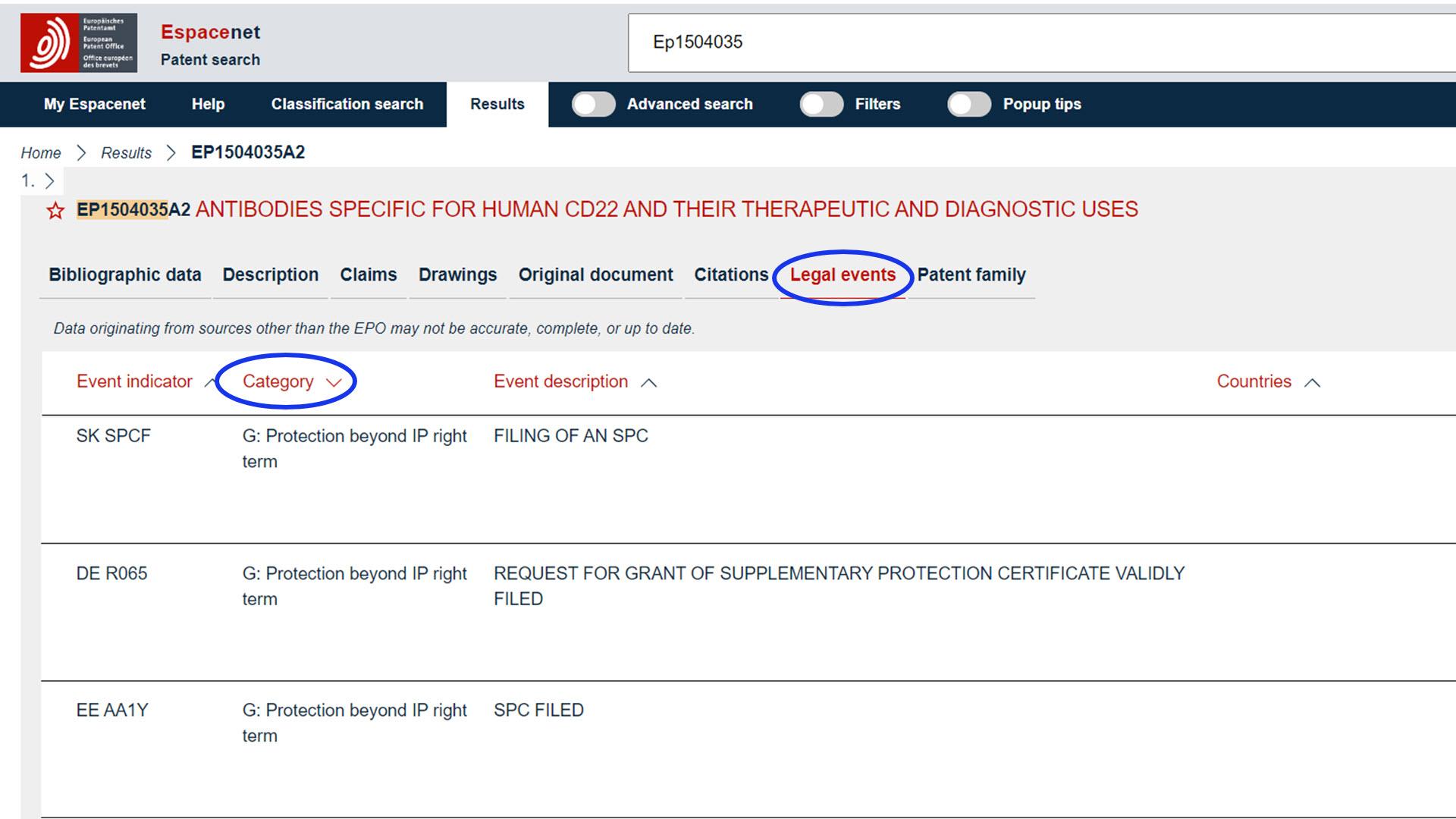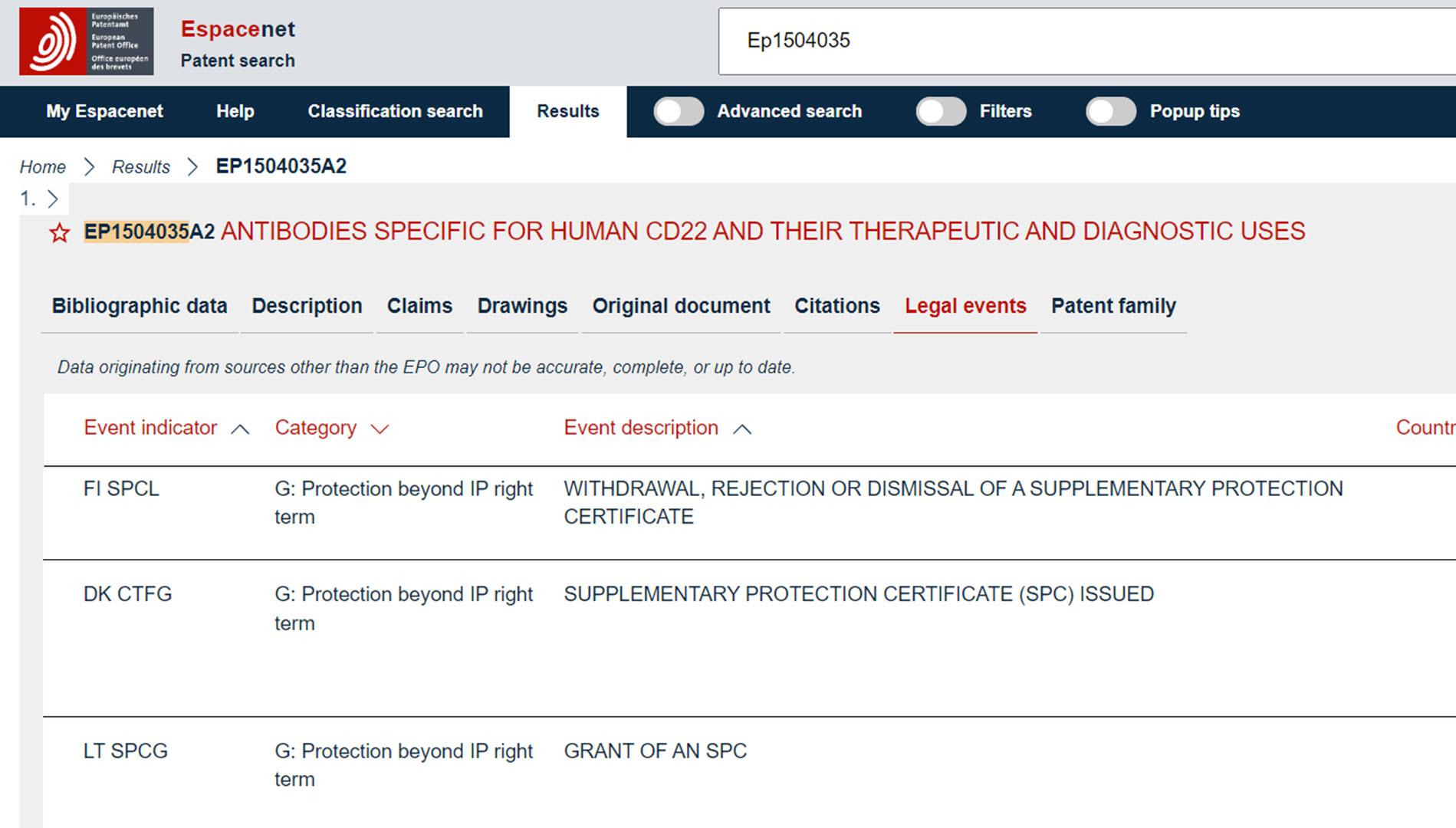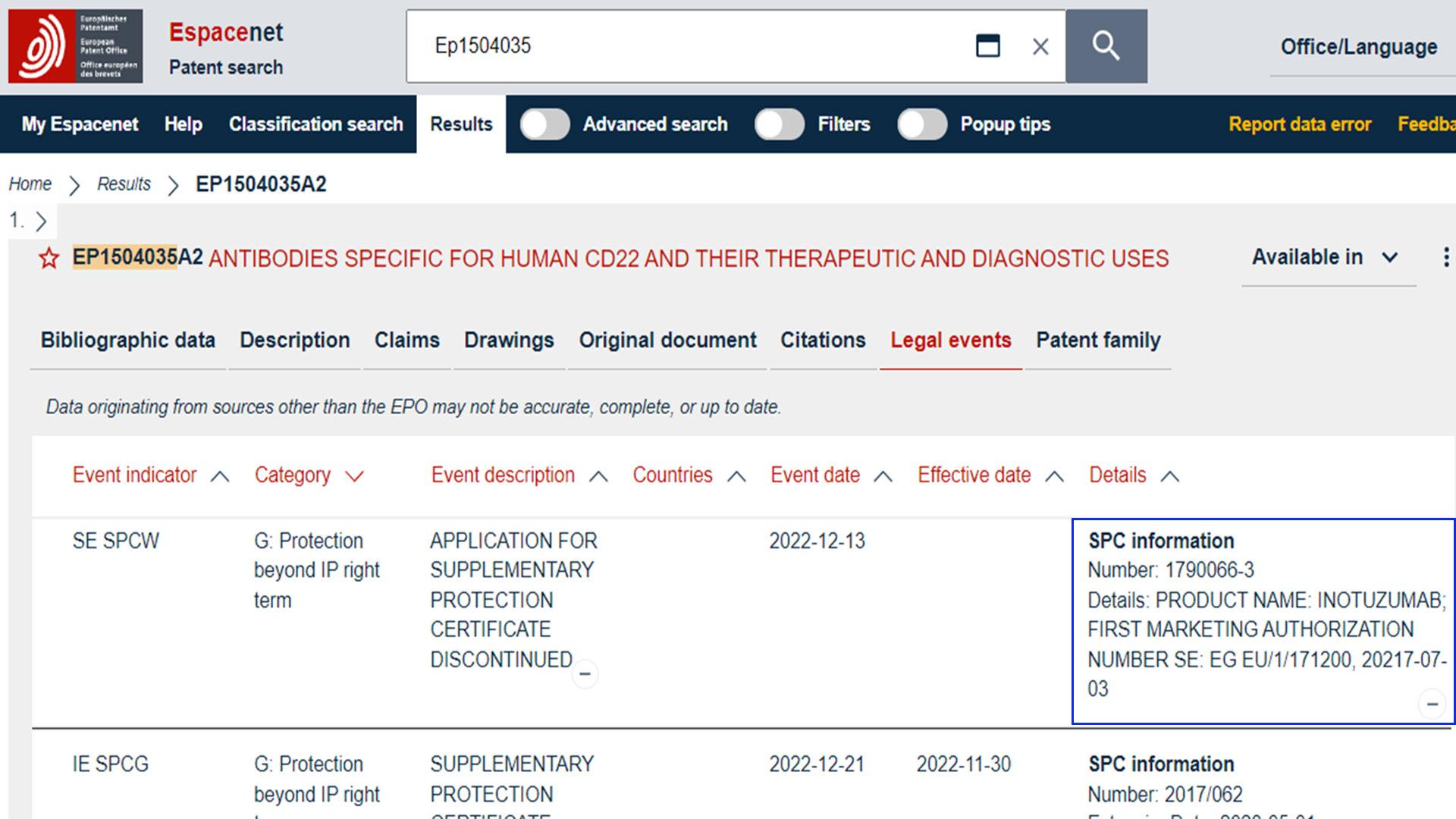Patent protection: need more time?
Supplementary protection certificates (SPCs) and how to find them in Espacenet
"Freedom to operate" is a crucial concept in the intellectual property world.
It means being commercially "safe" to make or sell your product in a particular country.
If there are no third-party registered rights in force, you can produce and/or sell a new product or device. But if there are such rights in force, you run the risk of having to stop selling, of paying royalties or of becoming embroiled in infringement proceedings. It is therefore of key importance to identify and assess IP rights or applications at risk of being infringed by the commercial activities you intend to pursue.
An important question is: has my competitor's patent expired? Be careful here as the regular patent term may have been extended using a supplementary protection certificate (SPC), meaning that the property right could still be in force after 20 years. This article looks at SPCs in more detail and explains how to find information about them in tools like Espacenet.
What are SPCs?
Development costs, clinical tests, market research – all part of a lengthy process which can be particularly challenging. In the pharmaceutical and medical engineering industries, for example, the period of effective patent protection is significantly shorter than in other sectors. This is largely due to the time it takes to secure marketing authorisation for a product.
SPCs were introduced to compensate inventors at least partially for the "patent time" lost between filing a patent application and securing marketing authorisation. Companies that research and develop new medicines can use SPCs to ensure that if a medicine makes it to the market, it will be protected from unfair competition for a fixed period of time.
SPCs are not strictly patent-term extensions, but rather separate (or sui generis) rights that come into effect when a patent expires and that last for a maximum period of five years. In some cases, an additional six-month "paediatric" extension is possible if the SPC relates to a medicinal product for children.

Fig. 1: information on SPCs. From: European Patent Academy: Patent litigation. Block 1: Supplementary protection certificates.
Where can I find information on SPCs?
You can find information on SPCs in Espacenet, the EPO's free online database with more than 150 million documents from over 100 countries. After opening a document, select the Legal events tab to check if an SPC has been requested.
The Legal events tab lists the various steps the document has gone through during the grant procedure. This information is taken from the EPO's INPADOC database which contains over 250 million legal event records from 70 patent authorities worldwide. To make it easier for patent information users to navigate this sea of information and to quickly check for a specific type of event, we have created a classification scheme for legal events. This scheme consists of 21 categories, with SPC-related events falling under category G ("Protection beyond IP right term").
Search for SPC information as follows:
a) After opening a document in Espacenet, select the Legal events tab, sort on Category and look for "Protection beyond IP right term" (category G) events:  Fig. 2: legal events, sorted according to event category.
Fig. 2: legal events, sorted according to event category.
b) Category G includes SPC-related events for different countries. The country code is shown in the Event indicator column (in the following example, FI = Finland, DK = Denmark and LT = Lithuania).
 Fig. 3: SPC-related legal events in different countries.
Fig. 3: SPC-related legal events in different countries.
c) The Details column shows more information, such as the SPC number, the product name and the first marketing authorisation number (as shown in Figure 4 below for an event related to an SPC application in Sweden). The SPC number can also help you find the corresponding legal event in national patent registers.
 Fig. 4: information on an SPC application in Sweden.
Fig. 4: information on an SPC application in Sweden.
We hope you've found this short introduction to "protection beyond the IP right term" useful, and that it has helped to develop your understanding of SPCs and their impact for your business.
Keywords: Supplementary protection certificates, SPC, patent term, freedom-to-operate, FTO













